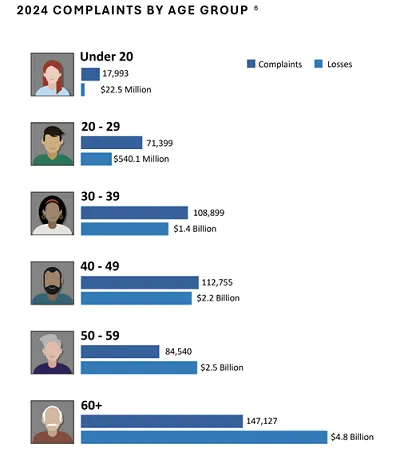Meta Platforms is rolling out a new wave of anti-scam tools and awareness programs tailored for older adults across its apps — including WhatsApp, Messenger, Instagram, and Facebook. Recognizing that users aged 60+ are disproportionately targeted in fraud schemes, Meta’s latest initiative mixes tech enhancements, education campaigns, and global partnerships to help prevent losses and boost digital safety.
For creators, community managers, and brands working with older audiences, this update is a timely reminder: safety and trust are now integral parts of your social-presence strategy.

What’s New: Tools, Alerts & Education
Screen-Sharing Warnings on WhatsApp
One of the key tools is on WhatsApp: when a user attempts to share their screen during a video call with someone they’ve not previously connected with, a prominent warning now appears. This is aimed at common scams where attackers ask victims to share screens and then gain access to banking apps, verification codes, or sensitive personal data.
AI-Powered Scam Alerts in Messenger
On Messenger, Meta is testing a system that flags potentially risky messages from new contacts. If the user chooses, recent chat messages can be sent for review by Meta’s AI system. If a threat is detected, the user will be presented with contextual information on common scam tactics — and options to block or report the account.
Secure Log-In and Privacy Check-Ups
Across its platforms, Meta is pushing the adoption of passkeys for log-in (biometric or PIN-based), reducing reliance on passwords. Additionally, it has introduced simplified Security Check-up flows on Facebook and Instagram, and a Privacy Check-up on WhatsApp, aimed at helping older users manage who can add them to groups, see their info, or message them.
Global Literacy & Campaigns
Meta isn’t stopping at features. The company has partnered with local authorities, nonprofits and telecom regulators globally. For example, in India Meta has joined the “Scams Se Bacho” (Beware of Scams) campaign and supports digital-literacy workshops for seniors under the “Saksham Senior” initiative. These programs use multilingual videos and on-ground training to raise awareness around fraud types that target older adults: fake home-renovation offers, debt-relief scams, fake “recovery” services, impersonated customer-support pages.
Why This Matters
– High Risk for Older Users
Statistics show that people aged 60 + reported the most cyber-fraud losses in the U.S. in 2024, totalling billions in financial damage. Meta’s tools are a response to real, widespread vulnerability.
– Trust & Platform Engagement
Older users often bring loyalty, high lifetime value, and word-of-mouth. Helping them feel safe not only protects them — it helps retain long-term engagement on Meta’s platforms.
– Brand Safety & Creator Responsibility
Creators and brands producing content for older audiences must now integrate trust messaging. When your community includes older users, referencing safety features, offering clear instructions, and avoiding suspicious CTA’s become part of best practice.
– Differentiation Opportunity
In a crowded social space, creators who explicitly show they care about user safety — especially for older users — can build stronger relationships and credibility. Whether you run a wellness page for retirees or a local community group, aligning your content around safety and clarity stands out.
Implications for Creators & Brands
- Tailor Content for Senior Audiences
If you target older users, ensure your visuals, language and CTAs are clear, avoid jargon, reduce urgency-based prompts (“Click now!”), and explicitly mention safety and help options. - Embed Trust Signals
Create posts explaining new tools: “Did you know WhatsApp now warns you before screen sharing?”, “Enable passkey login today!”. These reinforce your audience that you’re on their side. - Segment for Age-Specific Strategy
If you operate multiple pages (e.g., one for younger users, one for older), treat senior-facing content distinctly. Use simpler UI, slower pace, larger text, and safety reminders. You can manage multiple pages/account segments and test performance across them using multi-account strategies. - Monitor Safety-Linked Metrics
Beyond likes, also track engagement types relevant to older users: comments asking for assistance, shares of safety posts, number of messages asking “how do I…”. These indicate trust, not just views. - Educational Partnerships
Consider collaborating with local senior centres, libraries or organisations to run live sessions or share content emphasising digital literacy & scam-prevention.
Strategy for Next Week
- Draft a dedicated post for your older-audience community: e.g., “3 Simple Steps to Secure Your Facebook Account This Week”.
- Create a short video (30–45 s) showing how to enable passkey login or how to spot a fake customer-service messenger message.
- Segment your content calendar: Wednesday = “Safety Tip for Seniors”, Friday = “Weekly Review Q&A”.
- If you manage more than one profile or plan to test content across age segments, use secondary profiles or pages to trial different styles before rolling to your main brand.
Risks & Considerations
- Older audiences may respond slower to new tools — pace your changes and allow time for adoption.
- Overemphasising danger may discourage engagement — balance safety tips with positive, uplifting content.
- Safety features alone don’t eliminate risk. Scammers evolve fast; creators must stay updated and continue educating.
Final Thoughts
Meta’s new suite of features and campaigns to protect older users from scams is timely and meaningful. For creators and brands who engage with senior audiences, this is both a responsibility and an opportunity. By embracing clarity, trust and education, you can deepen audience bonds and stand out as a reliable voice in an increasingly complex digital world.
